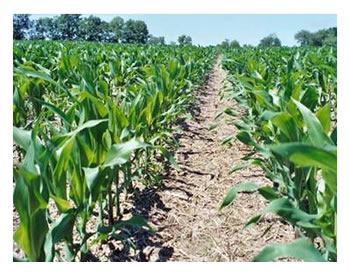 |
| Photo courtesy of Agrarian Adventure |
Our friends at the West Central Indiana Watershed Alliance have just released their spring newsletter: the Home Gardening Issue. It cautions home gardeners to be wise about their fertilizer use (it all drains into our common water supply) and also has some excellent information on those looking to start using cover crops - aka Green Manure.
WCIWA writes: "Cover crops...are an excellent tool for vegetable gardeners, especially where manures and compost are unavailable. They:
- lessen soil erosion during the winter
- add organic matter when turned under or used as mulch in the spring
- improve soil quality
- suppress weeds
- create and cycle soilborne nutrients"
What a list! No wonder Michelle Obama uses cover crops (annual rye is at least one) to help out the South Lawn's soil.
WCIWA also reminds home gardeners that: "Information on the use of cover crops is typically tailored to the needs of farmers working on large acres. But when you measure your cropping space in feet rather than acres and your main tools have wooden handles, you need a special set of cover crop plants and special methods for using them." After all, if you were going to knit a sweater, you wouldn't take your tips from J.Crew's factories; you'd use information from a smaller-scale resource.
Here's a fantastic video from the popular series Cooking Up A Story. In it, Master Gardener Jen Aron shows how she uses cover crops in her home garden.
WCIWA recommends these resources for the gardeners:
- Midwest Cover Crops Field Guide, from the Purdue Extension. A small book you can carry in your pocket, and only $5!
- Managing Cover Crops Profitably, via Sustainable Agriculture Research & Education. Free as a PDF or $19 as a book.


